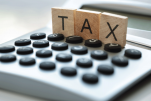
Proponents of an $11 billion split roll property tax increase refiled their ballot initiative last week, claiming “notable improvements to implementation dates, expansive new small business tax relief, clarified education financing and stronger zoning language to ensure large corporations cannot avoid reassessment.”
Breaking down the changes, one can’t help but conclude that proponents would not have thrown away $3.5 million in donors’ money spent to qualify the original measure to add a very minor change in the definition of business property or—even more laughably—to give a handful of property owners a pass on the tax increase.
Sloppy Drafting
The most likely reason for this expensive do-over is sloppy drafting of the original measure. Some school districts that rely primarily on local property taxes would have been left out of the money under the original measure’s tax distribution formula. That was a nonstarter for the education backers.
Also, the original measure may have required the tax increase to take effect before the vote on the initiative. This slapdash drafting threatened to undermine support and place the measure in legal peril.
While fixing those potentially fatal flaws, proponents carved out a relative handful of small property owners from the effect of the tax increase. Since most small businesses lease their space from commercial landlords and would pay the full cost of a split roll property tax increase, the measure’s proponents should not expect thank you notes from small business.
Costly Signature Drive
Split roll proponents raised and spent millions on their “oops” initiative, including $1.5 million from government unions and millions from foundations and social justice organizations, not to mention contributions from dozens of small donors. Now it’s back to square one to gather the even higher number of signatures to re-qualify the measure.
The government unions have deep pockets, so if they have the will, there is a way to collect the signatures. But it is also fair to ask if the proponents will actually drop the original, discredited—but qualified—measure in case they fail in round two. Is a lousy but lucrative measure better than none at all?
Rival Proposal
Another complication is a rival tax measure also angling for the 2020 ballot.
An erstwhile ally, the California School Boards Association, is marketing a similarly massive tax increase for voter consideration in 2020, an $11 billion hike in personal and corporate income taxes.
Can voters’ appetite for tax increases be that voracious, or will tax proponents gather in a smoke-free room to hammer out a compromise?
New Taxes Needed?
For voters, the question is whether massive new taxes are called for in the first place.
Governor Gavin Newsom just signed a state budget with a surplus north of $20 billion. And it’s still growing!
School funding per pupil has increased 70% since the depths of the recession. Governor Newsom has even thrown in extra funds this year to staunch the vexatious cost of pensions.
With money raining down on government treasuries, can voters be convinced to tax themselves even more?
Voter Resistance
Early indications are problematic for split roll proponents.
Some polls show a bare majority of Californians supportive; others reveal the measure unable to reach majority support. This is hardly encouraging with the prospect of a well-funded opposition campaign in the wings.
More daunting is the dry run in Los Angeles last June. A mini-split roll property tax proposal by the Los Angeles Unified School District could not even muster a simple majority support from a famously liberal electorate. The omens are not propitious!
This article first appeared as a Capitol Insider blog post.

